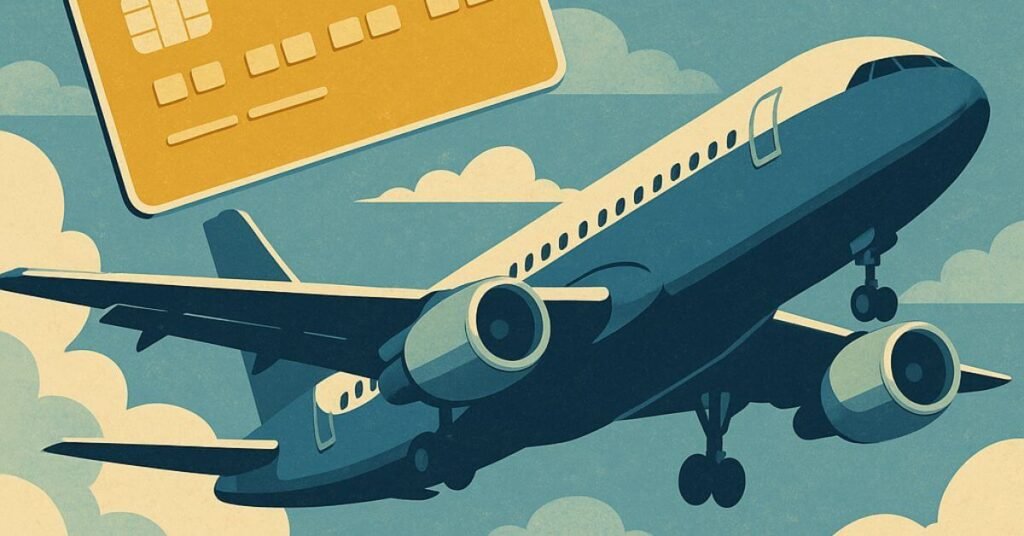With constant airline devaluations, dynamic pricing, and increasingly complex redemption rules, it’s a valid question: are frequent flyer programs still worth it in 2025? For years, these programs were the holy grail for travelers hoping to fly for free or get upgrades without spending thousands of dollars. But as loyalty programs evolve, many users wonder if the game is still worth playing.
In this article, we’ll explore how frequent flyer programs have changed, what still makes them valuable, what has become more difficult, and who can still benefit the most from participating.
The Evolution of Frequent Flyer Programs
When frequent flyer programs were first launched in the 1980s, they were revolutionary. Passengers earned miles based on the distance they flew, and redemptions followed simple award charts.
Over time, airlines realized the financial value of loyalty programs, leading to:
- Revenue-based earning systems
- Dynamic award pricing
- Partnerships with credit card issuers and banks
- Loyalty programs becoming billion-dollar businesses
In 2025, the landscape is more competitive, but also more complicated than ever.
What Has Changed in 2025?
Several trends have shaped the current state of airline loyalty programs:
1. Revenue-Based Earning
Today, most major programs reward flyers based on the money they spend, not the distance they travel.
Example:
- In the past: Fly 5,000 miles = earn 5,000 miles
- In 2025: Spend $300 = earn 1,500–2,100 miles (depending on status)
This favors business travelers or those paying for premium fares.
2. Dynamic Pricing on Redemptions
Fixed award charts are disappearing. Instead, redemption prices fluctuate based on demand, season, and route.
Example:
- A one-way domestic flight may cost 7,500 miles one day and 32,000 miles the next
It’s harder to predict how many miles you need for a specific flight, making it less appealing to casual users.
3. Increased Reliance on Credit Card Partnerships
Most airline programs are now closely tied to credit card ecosystems.
- Huge sign-up bonuses fuel point inflation
- Everyday spending becomes a primary method of earning miles
- Airline-branded credit cards now include lounge access, priority boarding, free bags
This has blurred the line between “frequent flyer” and “frequent spender.”
4. Fewer Award Sweet Spots
Over time, airlines have eliminated many of the best-value redemptions (often called “sweet spots”).
- Partner award availability is limited
- Stopovers are more restricted
- Award surcharges are higher, especially for international routes
What Still Makes Frequent Flyer Programs Worth It?
Despite the challenges, there are still powerful reasons to participate — if you know how to take advantage of the system.
1. High-Value Redemptions Are Still Possible
With the right strategy, you can still extract exceptional value from your miles — especially for:
- Long-haul international flights
- Business and first-class redemptions
- Partner airline awards (e.g., using American miles on Qatar Airways)
- Booking during award sales or transfer promotions
Even in 2025, redeeming 60,000 miles for a $3,000 flight is possible — that’s 5 cents per mile, well above average value.
2. Credit Card Bonuses Make It Easy to Accumulate Miles
You don’t need to be a frequent flyer to earn miles anymore.
- A single welcome bonus from a credit card can give you enough for a round-trip flight
- Strategic use of dining, shopping portals, and spending categories adds up fast
- Transferable points from banks give you flexibility across airlines
This makes loyalty programs accessible even to occasional travelers.
3. Elite Status Still Offers Travel Perks
If you travel frequently enough to earn elite status, you can still enjoy:
- Free checked bags
- Priority boarding
- Complimentary upgrades
- Airport lounge access
- Bonus earning rates on flights
For business travelers or those flying weekly, elite status still brings significant comfort and savings.
4. Airline Alliances Provide Global Reach
Thanks to alliances like Star Alliance, Oneworld, and SkyTeam, miles earned with one airline can be redeemed across dozens of partners.
This allows you to:
- Book flights with better availability
- Mix and match legs of an itinerary
- Reach destinations not served by your main airline
It’s one of the strongest features that still makes frequent flyer miles valuable.
Who Benefits Most from Frequent Flyer Programs in 2025?
While some casual travelers may not get the same value as before, certain groups continue to benefit greatly:
Business Travelers
With high-spend tickets, frequent travel, and expense accounts, business flyers can:
- Accumulate elite status quickly
- Earn miles at the highest rates
- Use lounges and upgrades regularly
Credit Card Maximizers
People who optimize credit card use can:
- Collect hundreds of thousands of miles annually
- Transfer points to the best partners
- Leverage promotions and stack offers
You don’t need to fly often — just spend strategically.
Travel Hackers and Deal Hunters
Those who follow travel blogs, mileage forums, and loyalty newsletters can find and exploit:
- Flash sales
- Award chart sweet spots
- Rare redemption opportunities on partner airlines
These travelers often get 5x or more value out of their miles compared to average users.
When Frequent Flyer Programs Might Not Be Worth It
Despite their advantages, some travelers are better off using other options.
If You Fly Infrequently and Don’t Use a Rewards Card
Occasional flyers who don’t use a miles-earning credit card may take years to accumulate enough for a single ticket — by which time their miles may expire.
In this case, cash-back or flexible point programs (like Capital One) might be better.
If You Only Book Domestic Economy Tickets
Dynamic pricing and low-cost fares often mean that domestic economy tickets are cheaper in cash than in miles.
Example:
- Cash fare: $89
- Award price: 15,000 miles + $6
- Value: Less than 0.6 cents per mile — not worth it
A simple travel rewards card could offer better value with fixed-rate redemption.
If You Don’t Want to Deal With Restrictions
Some people dislike:
- Limited award availability
- Blackout dates
- Partner booking complexity
- Taxes and fees on “free” flights
If convenience matters more than maximizing value, paying cash or using flexible points is simpler.
How to Decide If It’s Worth It for You
Ask yourself these key questions:
- Do I travel often enough to accumulate miles regularly?
- Am I willing to get and use a rewards credit card?
- Do I want to learn how to redeem miles effectively?
- Am I aiming for long-haul or premium flights that maximize value?
If the answer to two or more is “yes,” frequent flyer programs are likely still worth it for you in 2025.
Tips to Get the Most from Frequent Flyer Programs in 2025
- Track multiple programs using apps like AwardWallet
- Always compare cash vs. miles value before redeeming
- Watch for transfer bonuses and limited-time promotions
- Use alliances strategically to access better award space
- Keep your miles active by earning or redeeming at least once a year
- Combine airline miles with credit card points for flexibility
Final Thoughts: Still Worth It — If You Use Them Right
So, are frequent flyer programs still worth it in 2025?
Yes — but not for everyone.
The game has changed. Casual, passive participation rarely yields meaningful rewards. But for those who pay attention, act strategically, and engage with the system, airline miles can still unlock thousands of dollars in travel every year.
Frequent flyer programs now reward smart behavior, not just frequent flying.
If you’re ready to learn the rules, use the tools, and think long-term, the sky is still yours.
Elaine A. da Silva is a Brazilian travel and finance enthusiast, best known as the creator of the blog Dica das Milhas. With a strong background in personal finance and a passion for exploring smart travel strategies, she specializes in simplifying the world of airline miles and travel rewards for everyday people. Through her blog, Elaine shares practical tips, insider knowledge, and step-by-step guides to help readers save money and travel more efficiently using loyalty programs and credit card points.







